APC 2013 Annual Report Download - page 37
Download and view the complete annual report
Please find page 37 of the 2013 APC annual report below. You can navigate through the pages in the report by either clicking on the pages listed below, or by using the keyword search tool below to find specific information within the annual report.-
 1
1 -
 2
2 -
 3
3 -
 4
4 -
 5
5 -
 6
6 -
 7
7 -
 8
8 -
 9
9 -
 10
10 -
 11
11 -
 12
12 -
 13
13 -
 14
14 -
 15
15 -
 16
16 -
 17
17 -
 18
18 -
 19
19 -
 20
20 -
 21
21 -
 22
22 -
 23
23 -
 24
24 -
 25
25 -
 26
26 -
 27
27 -
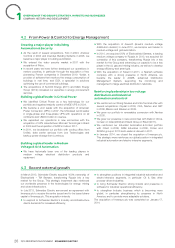 28
28 -
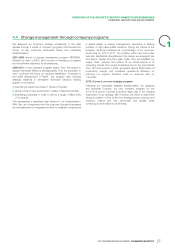 29
29 -
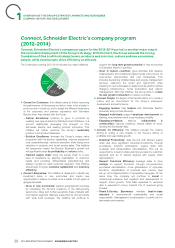 30
30 -
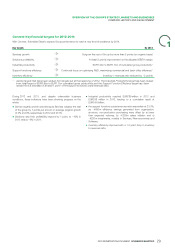 31
31 -
 32
32 -
 33
33 -
 34
34 -
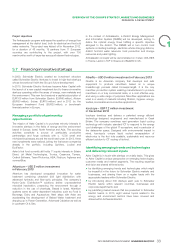 35
35 -
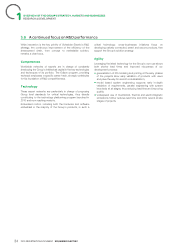 36
36 -
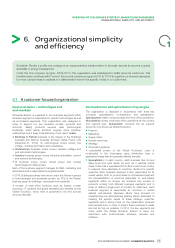 37
37 -
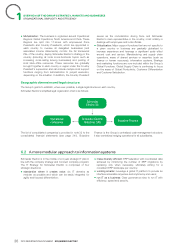 38
38 -
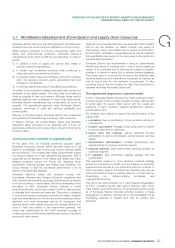 39
39 -
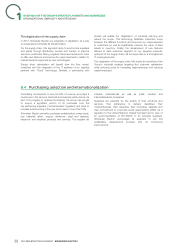 40
40 -
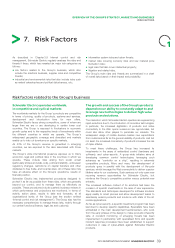 41
41 -
 42
42 -
 43
43 -
 44
44 -
 45
45 -
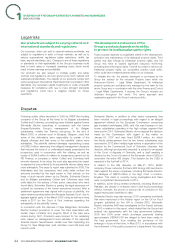 46
46 -
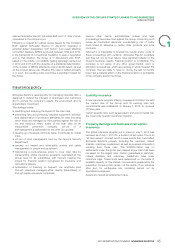 47
47 -
 48
48 -
 49
49 -
 50
50 -
 51
51 -
 52
52 -
 53
53 -
 54
54 -
 55
55 -
 56
56 -
 57
57 -
 58
58 -
 59
59 -
 60
60 -
 61
61 -
 62
62 -
 63
63 -
 64
64 -
 65
65 -
 66
66 -
 67
67 -
 68
68 -
 69
69 -
 70
70 -
 71
71 -
 72
72 -
 73
73 -
 74
74 -
 75
75 -
 76
76 -
 77
77 -
 78
78 -
 79
79 -
 80
80 -
 81
81 -
 82
82 -
 83
83 -
 84
84 -
 85
85 -
 86
86 -
 87
87 -
 88
88 -
 89
89 -
 90
90 -
 91
91 -
 92
92 -
 93
93 -
 94
94 -
 95
95 -
 96
96 -
 97
97 -
 98
98 -
 99
99 -
 100
100 -
 101
101 -
 102
102 -
 103
103 -
 104
104 -
 105
105 -
 106
106 -
 107
107 -
 108
108 -
 109
109 -
 110
110 -
 111
111 -
 112
112 -
 113
113 -
 114
114 -
 115
115 -
 116
116 -
 117
117 -
 118
118 -
 119
119 -
 120
120 -
 121
121 -
 122
122 -
 123
123 -
 124
124 -
 125
125 -
 126
126 -
 127
127 -
 128
128 -
 129
129 -
 130
130 -
 131
131 -
 132
132 -
 133
133 -
 134
134 -
 135
135 -
 136
136 -
 137
137 -
 138
138 -
 139
139 -
 140
140 -
 141
141 -
 142
142 -
 143
143 -
 144
144 -
 145
145 -
 146
146 -
 147
147 -
 148
148 -
 149
149 -
 150
150 -
 151
151 -
 152
152 -
 153
153 -
 154
154 -
 155
155 -
 156
156 -
 157
157 -
 158
158 -
 159
159 -
 160
160 -
 161
161 -
 162
162 -
 163
163 -
 164
164 -
 165
165 -
 166
166 -
 167
167 -
 168
168 -
 169
169 -
 170
170 -
 171
171 -
 172
172 -
 173
173 -
 174
174 -
 175
175 -
 176
176 -
 177
177 -
 178
178 -
 179
179 -
 180
180 -
 181
181 -
 182
182 -
 183
183 -
 184
184 -
 185
185 -
 186
186 -
 187
187 -
 188
188 -
 189
189 -
 190
190 -
 191
191 -
 192
192 -
 193
193 -
 194
194 -
 195
195 -
 196
196 -
 197
197 -
 198
198 -
 199
199 -
 200
200 -
 201
201 -
 202
202 -
 203
203 -
 204
204 -
 205
205 -
 206
206 -
 207
207 -
 208
208 -
 209
209 -
 210
210 -
 211
211 -
 212
212 -
 213
213 -
 214
214 -
 215
215 -
 216
216 -
 217
217 -
 218
218 -
 219
219 -
 220
220 -
 221
221 -
 222
222 -
 223
223 -
 224
224 -
 225
225 -
 226
226 -
 227
227 -
 228
228 -
 229
229 -
 230
230 -
 231
231 -
 232
232 -
 233
233 -
 234
234 -
 235
235 -
 236
236 -
 237
237 -
 238
238 -
 239
239 -
 240
240 -
 241
241 -
 242
242 -
 243
243 -
 244
244 -
 245
245 -
 246
246 -
 247
247 -
 248
248 -
 249
249 -
 250
250 -
 251
251 -
 252
252 -
 253
253 -
 254
254 -
 255
255 -
 256
256 -
 257
257 -
 258
258 -
 259
259 -
 260
260 -
 261
261 -
 262
262 -
 263
263 -
 264
264 -
 265
265 -
 266
266 -
 267
267 -
 268
268 -
 269
269 -
 270
270 -
 271
271 -
 272
272 -
 273
273 -
 274
274 -
 275
275 -
 276
276 -
 277
277 -
 278
278 -
 279
279 -
 280
280 -
 281
281 -
 282
282 -
 283
283 -
 284
284 -
 285
285 -
 286
286 -
 287
287 -
 288
288 -
 289
289 -
 290
290 -
 291
291 -
 292
292 -
 293
293 -
 294
294 -
 295
295 -
 296
296 -
 297
297 -
 298
298 -
 299
299 -
 300
300 -
 301
301 -
 302
302 -
 303
303 -
 304
304 -
 305
305 -
 306
306 -
 307
307 -
 308
308 -
 309
309 -
 310
310 -
 311
311 -
 312
312 -
 313
313 -
 314
314 -
 315
315 -
 316
316 -
 317
317 -
 318
318 -
 319
319 -
 320
320 -
 321
321 -
 322
322 -
 323
323 -
 324
324 -
 325
325 -
 326
326 -
 327
327 -
 328
328 -
 329
329 -
 330
330 -
 331
331 -
 332
332
 |
 |

OVERVIEW OF THE GROUP'S STRATEGY, MARKETS AND BUSINESSES
ORGANIZATIONAL SIMPLICITY AND EFFICIENCY
Organizational simplicity
6.
andefficiency
1
Schneider Electric’s profile has undergone an unprecedented transformation in the past decade to become a global
specialist in energy management.
Under the One company program (2009-2011), the organization was redesigned to better serve its customers. This
transformation continues with Connect, the current company program (2012 to2014) to organize our diverse businesses
for more cohesiveness to address in a differentiated manner the specific needs of our customers.
A customer focused organization
6.1
Dual orientation – technologies and Rationalization and optimization of synergies
end-markets The organization is deployed in accordance with three key
concepts: specialization, mutualization and globalization.
Schneider Electric is organized in four business segments. Each Specialization mainly concerns sales and front-office operations.
business segment is responsible for specific technologies as well Mutualization covers local back-office operations at the country
as end-market segments. This organization was designed in and regional level. Globalization concerns the six support
order to support our two business models: products and functions, now known as Global Functions:
solutions. Selling products requires clear technological
leadership, while selling solutions requires close customer Finance;
l
relationships and a deep understanding of end users’ needs. Marketing;
l
Buildings & Partner business is the merger of the Buildings
lSupply chain;
l
business and Partner business (formerly called Power until Human resources;
l
December31, 2012). Its technological scope covers low Strategy;
l
voltage , building automation and renewables. Information systems.
l
Infrastructure business scope covers medium voltage and
lA substantial portion of the Global Functions’ costs is
grid automation technologies. re-allocated to the businesses using distribution keys or
Industry business scope covers industrial automation, control
lapplication bases that are generally defined annually.
and sensors technologies. Specialization: in each country, each business has its own
l
IT business scope covers critical power and cooling
lsales force and local leader as soon as it reaches critical
technologies for data centers. mass. It also has a specialized front office in each host country
Each of the business segment manages its R&D, marketing and
to respond more effectively to customer demand for specific
sales teams and is responsible for its global results.
expertise. Each business segment is also responsible for its
overall results, both for product sales (in its business lines) and
In 2014, Buildings business has moved under the Partner business
the implementation of solutions (especially for end-market
to build synergies and accelerate growth, as 70% of the Partner
segments within its scope). As solutions can consist of
business goes into buildings, commercial and residential.
products coming from different business segments and in
A number of back-office functions such as finance, human order to define a single point of contact for customers, each
resources, IT systems and global marketing are handled by the business segment is responsible for solutions in certain
Global Functions, which have a governance role and provide defined end-markets. Business efforts have focused on
services internally. implementing and strengthening existing teams dedicated to
meeting the specific needs of these strategic customer
segments with a strong focus on the collaboration between
the business lines, in order to ensure these customer’s needs
are met as fully as possible. In 2014, the key segments will
move under the Global Solutions division to serve our
customers with multi-business solutions, services and
software.
35
2013 REGISTRATION DOCUMENT SCHNEIDER ELECTRIC
